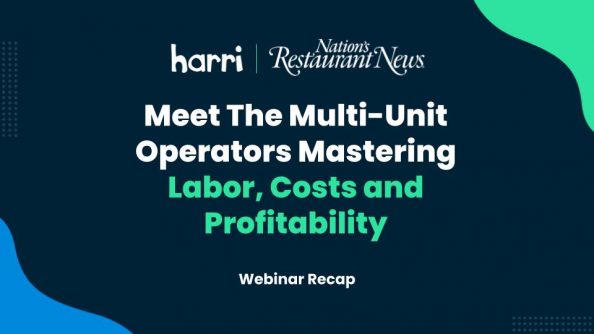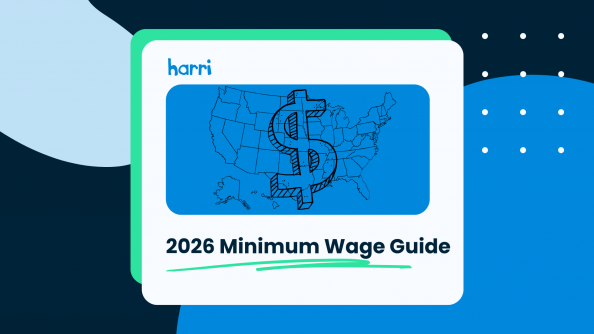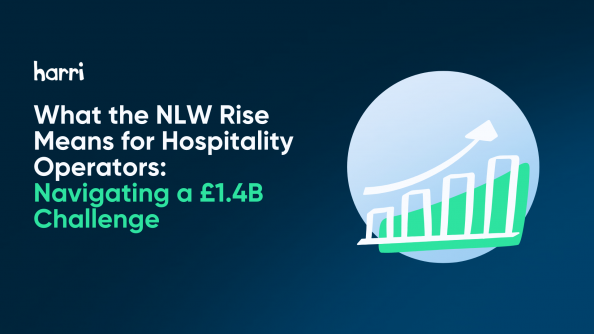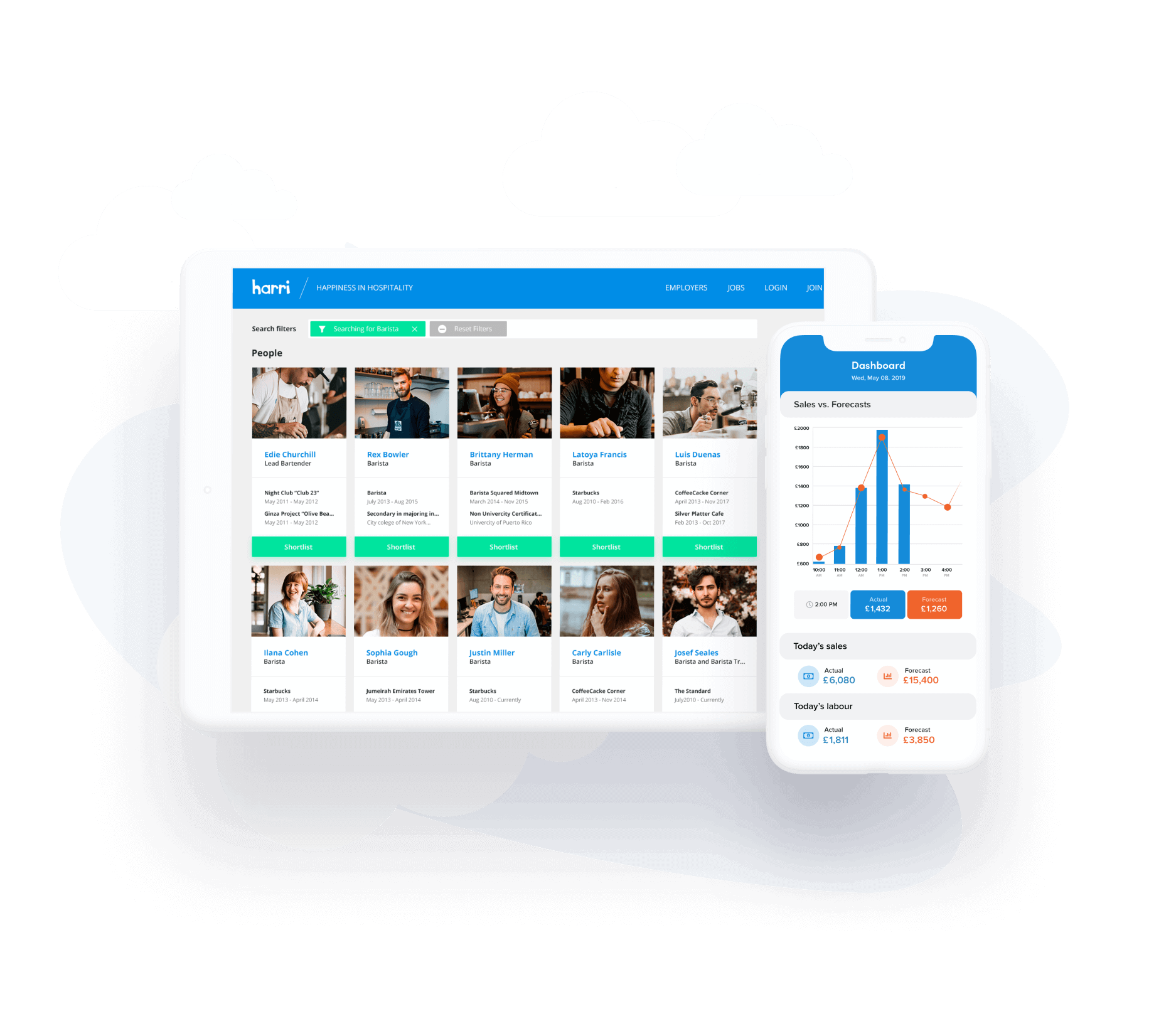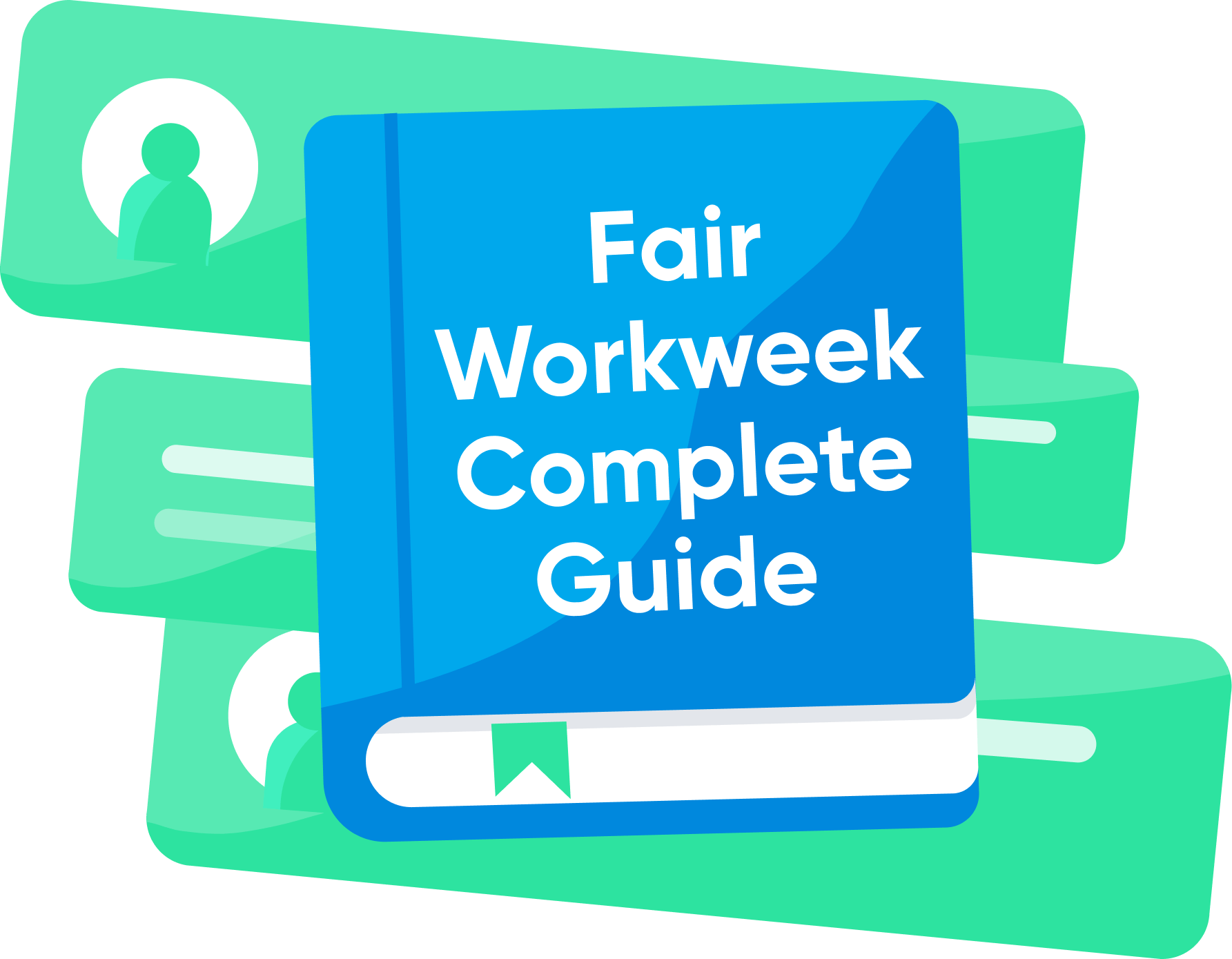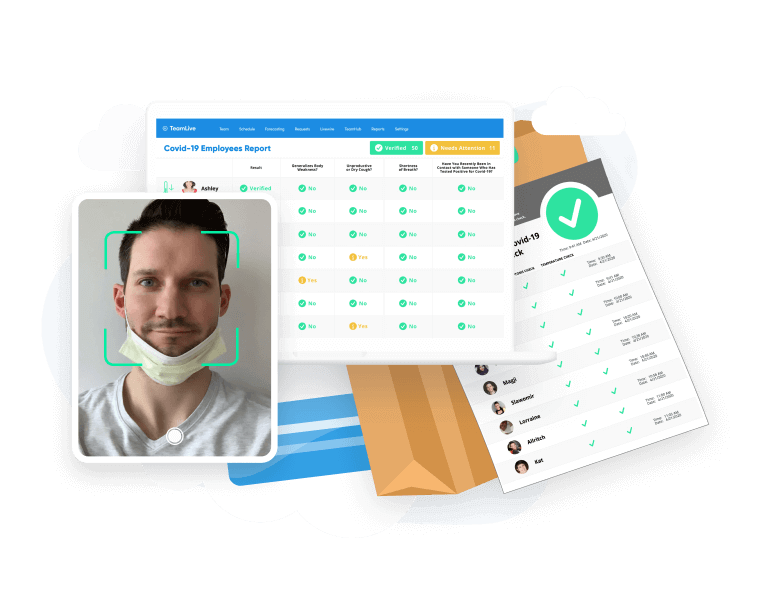2025 Minimum Wage Guide: How Much is the Minimum Wage in Each State?
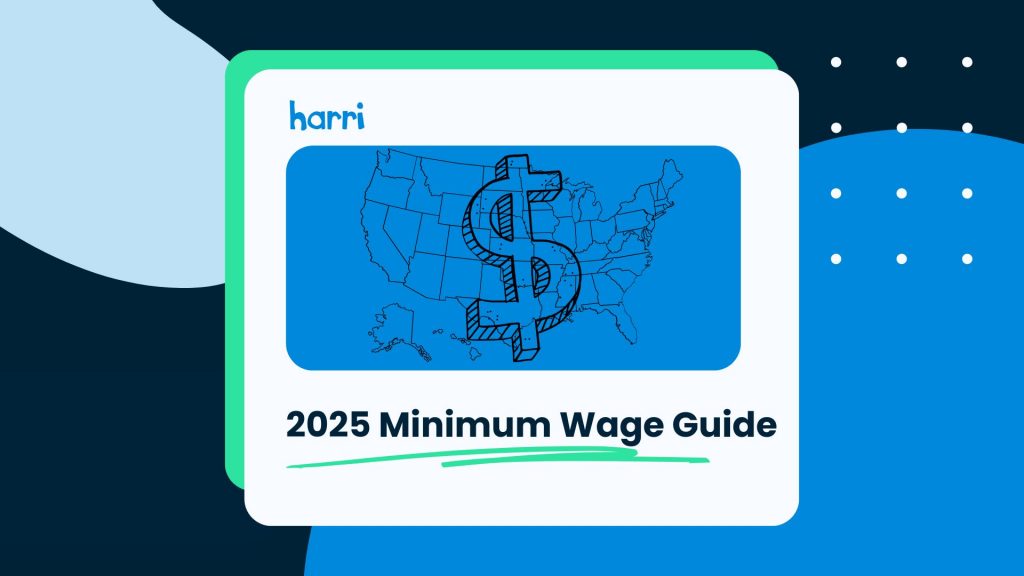
- By Harri Insider Team | June 7, 2025
As we move further into 2025, new and anticipated minimum wage rules continue to emerge across various states and local jurisdictions, impacting corporations, employers, and workers. This comprehensive guide aims to simplify the information, helping you understand how these changes will affect your jurisdiction.
Below, you’ll see a full breakdown of the upcoming minimum wage increases and significant policy developments.
Save this link as your simplified and fully-updated guide to 2025 minimum wage and need-to-know items for employers such as:
- The federal minimum wage history and how we got here
- The impact of inflation on minimum wage
- 2025 minimum wage increases by state
- Current minimum wages in all 50 states, Washington D.C. and Puerto Rico.
Minimum Wage History and How We Got Here
To see the full impact of 2025 minimum wage increases, we’ll take a step back to detail the historical context of federal and state wage legislation.
The minimum wage is the lowest hourly pay rate that an employer is legally required to pay their hourly workers. It began with the purpose of stabilizing the economy in 1938 as part of the Fair Labor Standards Act (FLSA). At that time, the federal minimum wage was $0.25. It slowly rose through the decades to accommodate the growing economy and associated cost of living that followed.
What is the federal minimum wage?
The federal minimum wage has remained at $7.25 per hour since its last increase in 2009. As living expenses and financial circumstances varied significantly from one state to another, the need for state-specific minimum wages arose.
In 1997, Congress enacted legislation granting individual states the authority to establish their own minimum wage rates. States can also determine the timing of rate adjustments, which may not necessarily align with the federal minimum wage increase schedule. Furthermore, some states have empowered local jurisdictions and municipalities the authority to establish their own minimum wage standards.
As of November 2023, 30 states and the District of Columbia have minimum wages higher than the federal requirement. Moreover, more than 45 localities, including Chicago, Los Angeles, and New York City, have adopted minimum wages above their state requirements.
What is the impact of inflation on wages?
As a frontline employer, you’re likely feeling the impact of inflation. Just like your customers, your workers may experience changes in their lifestyle and financial decisions as the purchasing power of their paychecks declines. To preserve the purchasing power of their minimum wage rates, many states adjust their rates annually based on the Consumer Price Index (CPI).
Minimum Wage Raises by State
Throughout 2025, minimum wage adjustments will continue to take effect across numerous U.S. jurisdictions, reflecting ongoing efforts to update wage standards. For instance, Los Angeles will raise the minimum wage for hotel and airport workers to $22.50 per hour on July 1, 2025, on its way to $30 per hour by 2028, a measure relevant to the upcoming 2028 Olympics.
In total, a record 88 jurisdictions— 23 states and 65 cities and counties—will raise their minimum wage by the end of 2025. Meanwhile, Alabama, Georgia, Louisiana, Mississippi, South Carolina, Tennessee, and Wyoming either do not have a state minimum wage or have set their minimum wage below the federal level.
Which states have a minimum wage that is $15 or more?
As of July 1, 2025, a total of 9 states will have a state-wide minimum wage of $15.00 or more and 96 local jurisdictions. While many states have adopted a statewide minimum wage of $15.00 or more, several others maintain a lower state minimum wage but have local jurisdictions where the rate has reached or exceeded $15.00. This often requires employers to monitor local ordinances in addition to state mandates. Examples of such states and prominent local jurisdictions with a minimum wage of $15.00 or more include:
- Arizona: the statewide minimum wage is $14.70, but local jurisdictions like Flagstaff ($17.85) and Tucson ($15.00) have higher rates.
- Colorado: with a statewide minimum wage of $14.81, local jurisdictions such as Boulder County ($16.57), the City of Boulder ($15.57), and the City of Edgewater ($16.52) have enacted higher local minimums.
- Maine: the statewide minimum wage is $14.65, while local jurisdictions like Portland ($15.50) and Rockland ($15.50) have adopted rates of $15.00 or more.
How much is the minimum wage in each state?
Below, you’ll find a comprehensive list of minimum wage rates in each state. You’ll see details on states that won’t see a change, those that will, and when to expect the new legislation to go into effect.
Jurisdiction | Minimum Wage as of July 1, 2025 |
Federal | $7.25 |
Alabama | $7.25 |
Alaska | $13.00 |
Arizona | $14.70 |
Arizona – Flagstaff | $17.85 |
Arizona – Tucson | $15.00 |
Arkansas | $11.00 |
California | $16.50 |
California – Fast Food Workers | $20.00 |
California – Alameda | $17.46 |
California – Belmont | $18.30 |
California – Berkeley | $19.18 |
California – Burlingame | $17.43 |
California – Cupertino | $18.20 |
California – Daly City | $17.07 |
California – East Palo Alto | $17.45 |
California – El Cerrito | $18.34 |
California – Emeryville | $19.90 |
California – Foster City | $17.39 |
California – Fremont | $17.75 |
California – Glendale Hotel Workers | $22.50 |
California – Half Moon Bay | $17.47 |
California – Hayward 26+ Employees | $17.36 |
California – Hayward 1-25 Employees | $16.50 |
California – Long Beach Hotel Workers | $25.00 |
California – Long Beach Concessionaire | $18.58 |
California – Los Altos | $18.20 |
California – Los Angeles (City of) | $17.87 |
California – Los Angeles Hotel Worker | $22.50 |
California – Los Angeles County Unincorporated | $17.81 |
California – Malibu | $17.27 |
California – Menlo Park | $17.10 |
California – Milpitas | $18.20 |
California – Mountain View | $19.20 |
California – Novato 100+ Employees | $17.27 |
California – Novato 26-99 Employees | $17.00 |
California – Novato 1-25 Employees | $16.50 |
California – Oakland | $16.89 |
California – Oakland Hotel Employees | $18.36 with health benefits $24.48 without health benefits |
California – Palo Alto | $18.20 |
California – Pasadena | $18.04 |
California – Petaluma | $17.97 |
California – Redwood City | $18.20 |
California – Richmond | $16.27 with health benefits $17.77 without health benefits |
California – San Carlos | $17.32 |
California – San Diego | $17.25 |
California – San Francisco | $19.18 |
California – San Jose | $17.95 |
California – San Mateo (City of) | $17.95 |
California – San Mateo County | $17.46 |
California – Santa Clara | $18.20 |
California – Santa Monica | $17.81 |
California – Santa Monica Hotel Workers | $22.50 |
California – Santa Rosa | $17.87 |
California – Sonoma Large Employer | $18.02 |
California – Sonoma Small Employer | $16.96 |
California – South San Francisco | $17.70 |
California – Sunnyvale | $19.00 |
California – West Hollywood | $19.65 |
California – West Hollywood Hotel Workers | $20.22 |
Colorado | $14.81 |
Colorado – Boulder (City of) | $15.57 |
Colorado – Boulder County | $16.57 |
Colorado – Denver | $18.81 |
Colorado – Edgewater | $16.52 |
Connecticut | $16.35 |
Delaware | $15.00 |
District of Columbia | $17.95 |
Florida | $13.00 |
Georgia | $7.25 |
Guam | $9.25 |
Hawaii | $14.00 |
Idaho | $7.25 |
Illinois | $15.00 |
Illinois – Chicago | $16.60 |
Illinois – Cook County | $15.00 |
Indiana | $7.25 |
Iowa | $7.25 |
Kansas | $7.25 |
Kentucky | $7.25 |
Louisiana | $7.25 |
Maine | $14.65 |
Maine – Portland | $15.50 |
Maine – Rockland | $15.50 |
Maryland | $15.00 |
Maryland – Howard County 15+ Employees | $16.00 |
Maryland – Howard County 1-14 Employees | $15.00 |
Maryland – Montgomery County Large Employer | $17.65 |
Maryland – Montgomery County Mid-Size Employer | $16.00 |
Maryland- Montgomery County Small Employer | $15.50 |
Massachusetts | $15.00 |
Michigan | $12.48 |
Minnesota | $11.13 |
Minnesota – Minneapolis | $15.97 |
Minnesota – St. Paul Macro Employer | $15.97 |
Minnesota – St. Paul Large Employer | $15.97 |
Minnesota – St. Paul Small Employer | $15.00 |
Minnesota – St. Paul Micro Employer | $13.25 |
Mississippi | $7.25 |
Missouri | $13.75 |
Montana | $10.55 |
Nebraska | $13.50 |
Nevada | $12.00 |
New Hampshire | $7.25 |
New Jersey – Most Employers | $15.49 |
New Jersey – Small Employers | $14.53 |
New Mexico | $12.00 |
New Mexico – Albuquerque | $12.00 |
New Mexico – Las Cruces | $12.65 |
New Mexico – City of Santa Fe | $15.00 |
New Mexico – Sante Fe County | $15.00 |
New York | $15.50 |
New York – Nassau, Suffolk, Westchester Counties | $16.50 |
New York – New York City | $16.50 |
North Carolina | $7.25 |
North Dakota | $7.25 |
Ohio | $10.70 |
Oklahoma | $7.25 |
Oregon – Standard | $15.05 |
Oregon – Portland, Urban Growth | $16.30 |
Oregon – Non-Urban Counties | $14.05 |
Pennsylvania | $7.25 |
Puerto Rico | $10.50 |
Rhode Island | $15.00 |
South Carolina | $7.25 |
South Dakota | $11.50 |
Tennessee | $7.25 |
Texas | $7.25 |
US Virgin Islands | $10.50 |
Utah | $7.25 |
Vermont | $14.01 |
Virginia | $12.41 |
Washington | $16.66 |
Washington – Bellingham | $18.66 |
Washington – Burien Level 1 Employer | $21.16 |
Washington – Burien Level 2 Employer | $20.16 |
Washington – Everett Large Employers | $20.24 |
Washington – Everett Other Covered Employers | $18.24 |
Washington – Unincorporated King County 500+ Employees | $20.29 |
Washington – Unincorporated King County 15-499 Employees | $18.29 |
Washington – Unincorporated King County <15 Employees and $2mil+ annual gross revenue | $18.29 |
Washington – Unincorporated King County <15 Employees and <$2mil+ annual gross revenue | $17.29 |
Washington – Renton Large Employer | $20.90 |
Washington – Renton Mid-Size Employer | $19.90 |
Washington – Seattle | $20.76 |
Washington – SeaTac | $20.17 |
Washington – Tukwila Large Employer | $21.10 |
Washington – Tukwila Mid-Size Employer | $21.10 |
West Virginia | $8.75 |
Wisconsin | $7.25 |
Wyoming | $7.25 |
How to Prepare for Minimum Wage Increases
Employers will want to have a game plan for communicating changes to employees. Open conversations and transparency ensure that workers understand how new legislation directly affects their wallets. Below, we outline a few important notes to consider as you start your communication plan.
Minimum Wage Considerations and Exemptions
The Department of Labor (DOL) website is a valuable resource for additional guidance on the federal minimum wage. There, employers and their workers will find an “Employment Law Guide,” a Q and A about the federal minimum wage, information on Youth Minimum Wage, and additional Interpretive Guidance.
Tipped employees: Under the Federal Labor Standards Act (FLSA), employers are authorized to pay tipped employees at least $2.13 an hour in direct wages if they receive pay that is at least equal to the federal minimum wage with tips. Otherwise, employers are required to make up the difference. Some states also have minimum wage laws specific to tipped employees. In some jurisdictions, the minimum cash wage for tipped employees increases when the minimum wage increases. Other jurisdictions, like Alaska, California, Minnesota, and Montanan, do not allow employers to apply a tip credit toward the minimum wage.
Young workers: Certain employers may be able to pay youth workers at a rate below the established minimum wage. For example, according to the FLSA, employers have the option to give individuals under the age of 20 a minimum wage of not less than $4.25 per hour. In other jurisdictions, such as Connecticut, the youth minimum wage is determined as a percentage of the established minimum wage.
Please note: Employers considering a sub-minimum wage for youth workers should weigh the administrative burden against potential benefits. Strict adherence to probationary periods is essential to avoid legal penalties. Many employers find it administratively simpler and more beneficial for recruitment and employee relations to pay the full minimum wage, as sub-minimum wage rates can be a competitive disadvantage.
Full-time students: Employers can obtain a certificate from the DOL as part of The Full-time Student Program to pay students in retail or service stores, agriculture, or colleges and universities. Students receive at least 85% of the minimum wage, with daily hours limited to 8 and weekly hours limited to 20 when school is in session. Students can work up to 40 hours when school is not in session.
How to notify employees of minimum wage increases
Some states have distinct requirements regarding notifying employees about wage changes. Some require the use of specific forms, which can potentially impact the onboarding process. When establishing location-specific requirements, prioritize clear and effective communication. Employers should clearly convey the timing for each worker to expect an updated paycheck and provide any logistical details for their preparation.
Navigate Minimum Wage Changes With Harri
The Harri team is here to help answer any questions you have about notifying employees. Employers using Harri’s tools for talent management and onboarding today benefit from features built to keep you ahead of the game and confident about changes.
As always, we’ll continue to deliver the latest news across the employment landscape in a simple way so you can focus on growing your business with incredible talent.
Curious about how Harri helps your workforce? Chat with our team today to learn how our unparalleled employee experiences drive business performance for over 20,000 restaurant and hotel locations globally.




